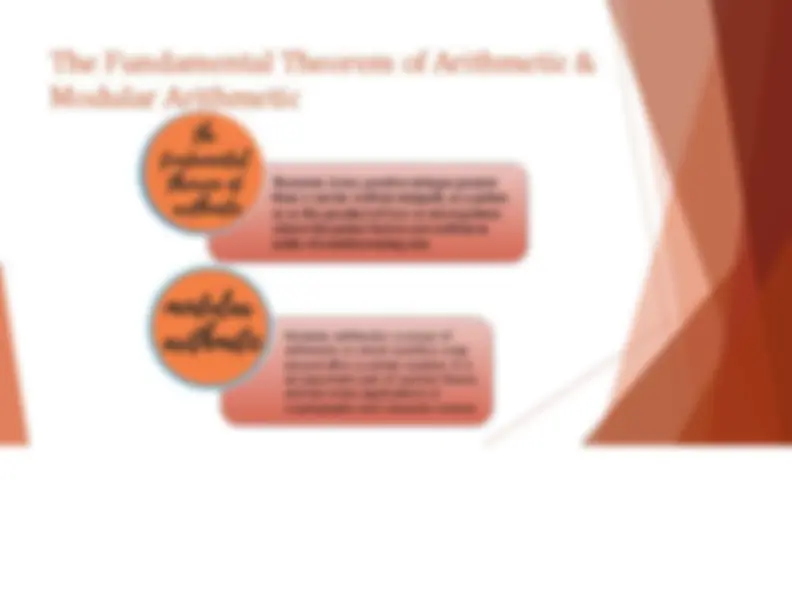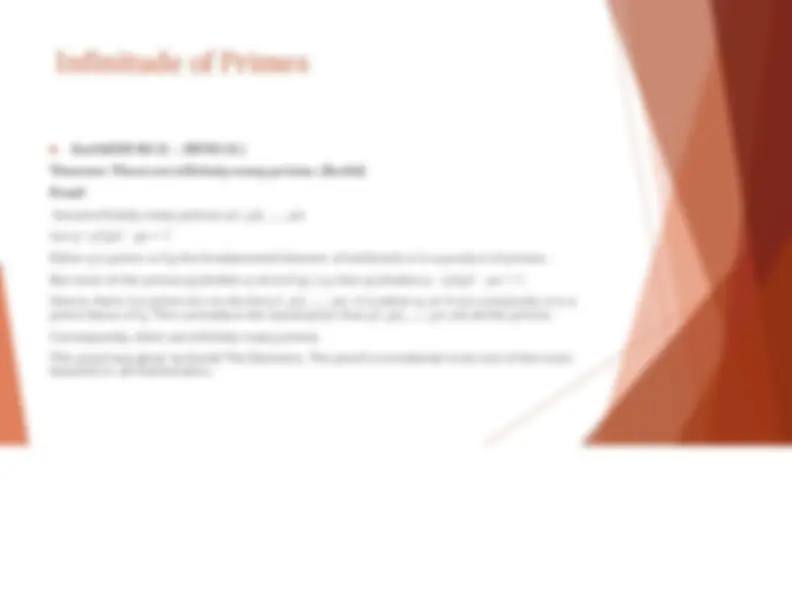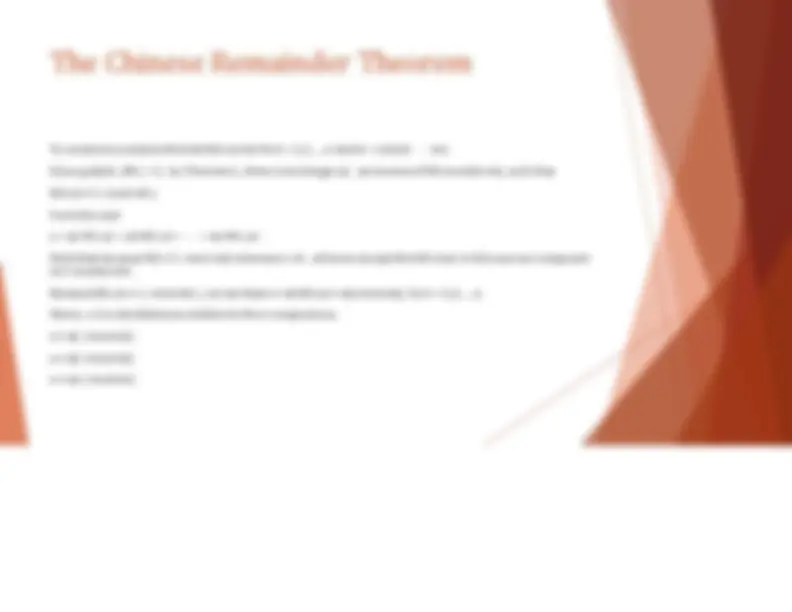








Study with the several resources on Docsity

Earn points by helping other students or get them with a premium plan


Prepare for your exams
Study with the several resources on Docsity

Earn points to download
Earn points by helping other students or get them with a premium plan
Community
Ask the community for help and clear up your study doubts
Discover the best universities in your country according to Docsity users
Free resources
Download our free guides on studying techniques, anxiety management strategies, and thesis advice from Docsity tutors
An introduction to number theory in discrete mathematics. It covers definitions, the fundamental theorem of arithmetic, modular arithmetic, infinitude of primes, Diophantine equations, Fermat’s Little Theorem, and the Chinese Remainder Theorem. Number theory is an essential part of discrete mathematics and has applications in computer science, cryptography, and other fields. a proof of Euclid's theorem that there are infinitely many primes and explains how Diophantine equations can be used to solve problems in number theory.
Typology: Slides
1 / 10

This page cannot be seen from the preview
Don't miss anything!







Euclid(325 B.C.E. – 265 B.C.E.) Theorem: There are infinitely many primes. (Euclid) Proof: Assume finitely many primes: p1, p2, ….., pn Let q = p1p2∙∙∙ pn + 1 Either q is prime or by the fundamental theorem of arithmetic it is a product of primes. But none of the primes pj divides q since if pj | q, then pj divides q − p1p2∙∙∙ pn = 1. Hence, there is a prime not on the list p1, p2, ….., pn. It is either q, or if q is composite, it is a prime factor of q. This contradicts the assumption that p1, p2, ….., pn are all the primes. Consequently, there are infinitely many primes. This proof was given by Euclid The Elements. The proof is considered to be one of the most beautiful in all mathematics.
To construct a solution first let Mk=m/mk for k = 1,2,…,n and m = m1m2 ∙ ∙ ∙ mn. Since gcd(mk ,Mk ) = 1, by Theorem 1, there is an integer yk , an inverse of Mk modulo mk, such that Mk yk ≡ 1 ( mod mk ). Form the sum x = a1 M1 y1 + a2 M2 y2 + ∙ ∙ ∙ + an Mn yn. Note that because Mj ≡ 0 ( mod mk) whenever j ≠k , all terms except the kth term in this sum are congruent to 0 modulo mk. Because Mk yk ≡ 1 ( mod mk ), we see that x ≡ ak Mk yk ≡ ak( mod mk), for k = 1,2,…,n. Hence, x is a simultaneous solution to the n congruences. x ≡ a1 ( mod m1) x ≡ a2 ( mod m2) x ≡ an ( mod mn)